Varieties and types of cabbage with photos and descriptions
The variety of species and varieties of cabbage is united by the main factors: it is low in calories and rich in nutrients. Each variety has its own advantages and disadvantages, requirements for cultivation agricultural technology. Studying the properties and indicators of productive varieties will allow you to choose the right ones. We offer a description of all types and some varieties with photos and names.
The content of the article
The best varieties of white cabbage
Choice white cabbage varieties based on:
- suitability for cultivation of a particular variety in their region;
- frost resistance, resistance to temperature changes;
- growing conditions;
- immunity to disease;
- Areas of use.
For open ground
For outdoor cultivation white cabbage varieties of any ripening period are suitablemeeting the following requirements:
- cold resistance and frost resistance;
- large size of heads of cabbage or wide rosette of leaves;
- preservation of the integrity of the head of cabbage in prolonged wet weather.
Three heroes
Ripening period to biological ripeness - 140-160 days... A rounded green head of cabbage has a dense structure, due to the presence of a waxy coating, the upper leaves are slightly gray. The root system is powerful. Heads weight - 10-15 kg, yield - 30-50 kg / m². Shelf life - up to 9 months.
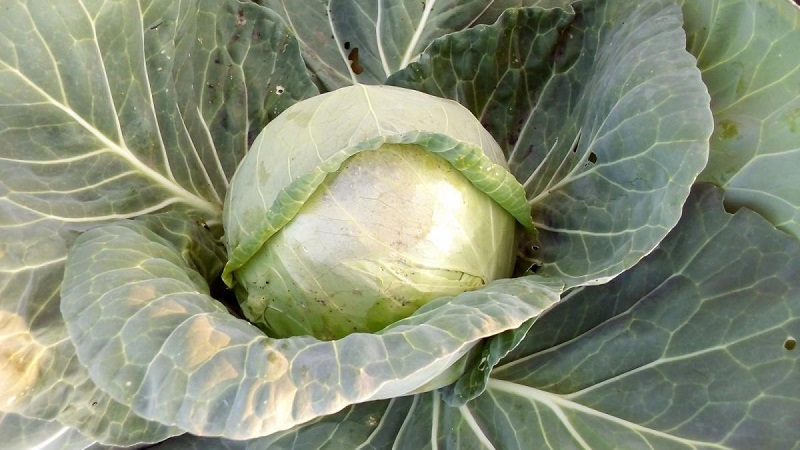
Advantages:
- large size - the diameter of the heads of cabbage reaches 50 cm;
- resistance to temperature changes;
- resistance to cracking;
- undemanding care;
- the possibility of mechanical harvesting.
disadvantages:
- exactingness to watering;
- disease prevention is mandatory.
Variety suitable for two-year cultivation in order to obtain seeds.
Kevin F1
Ultra-early self-pollinating hybrid with a ripening period of 50-54 days... The forks are round, dense, firm, light green in color, light yellow at the cut. Thanks to the compact rosette, the crop requires less growing area. Heads weight - 1.5-2 kg, yield reaches 12 kg / m² due to denser planting. Storage of vegetables at a temperature of + 2 ... + 4 ° C - up to 3 months.
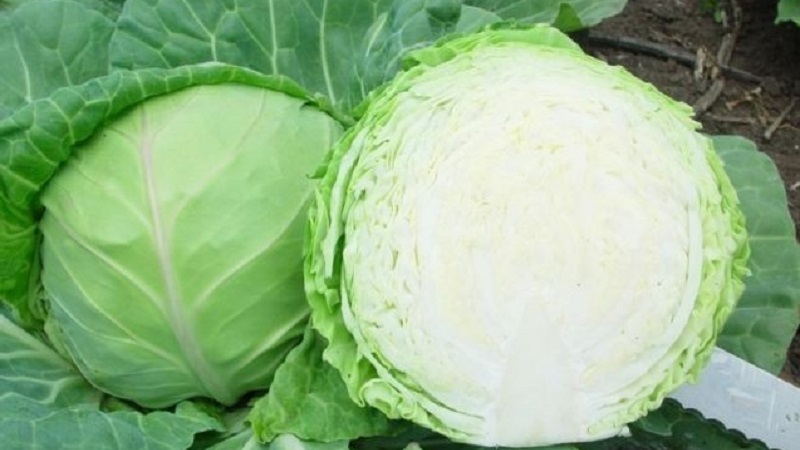
The virtues of Kevin cabbage:
- frost-resistant (up to -7 ° C);
- suitable for growing in a greenhouse or using non-woven fabric;
- resistant to cracking and disease.
disadvantages:
- does not tolerate drought;
- picky about care;
- heads of cabbage are suitable for fresh use only.
Keel resistant
Kila - a disease that forms growths on the roots of cabbage - leads to the death of the plant... The spores of the fungus that cause damage are found in the soil and are carried by rainwater or watering.
F1 record miracle
Late ripe hybrid bred by Dutch breeders, has a ripening period of 150-160 days. Flat-round head of cabbage of gray-green color, milky-white on the cut. The weight of the forks reaches 20 kg, subject to the rules of agricultural technology, the average weight is 10-15 kg. On 1m², under favorable weather conditions, it grows up to 60 kg of a selected crop. Shelf life - up to 6 months.
Advantages:
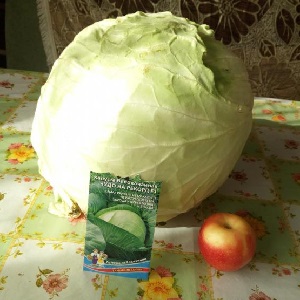 large size and weight of heads of cabbage;
large size and weight of heads of cabbage;- resistance to keel and fusarium;
- resistance to temperature changes;
- frost resistance (up to -5 ° C);
- immunity to pest damage.
disadvantages:
- not suitable for growing in a greenhouse due to its large size;
- picky about soil acidity and lighting;
- picky about watering: with a lack of moisture, heads of cabbage are not tied;
- needs hilling or garter as the stump grows.
Culture suitable for growing in regions with unstable weather conditions.
Galaxy F1
Dutch breeding hybrid ripens in 165-180 days... Heads of cabbage are flattened dark green, white-yellow on the cut. Differs in the evenness of the ripe crop. The mass of the forks is 3.2–4.6 kg, the yield is 5–7 kg / m². Shelf life - up to 10-12 months.
Advantages:
- resistant to cracking and disease;
- undemanding to the care and quality of the soil;
- little susceptible to damage by pests;
- withstands frost (seedlings - up to -5 ° C, an adult plant - up to -8 ° C);
- long shelf life of the crop without loss of taste.
According to gardeners, Galaxy F1 cabbage has no drawbacks.
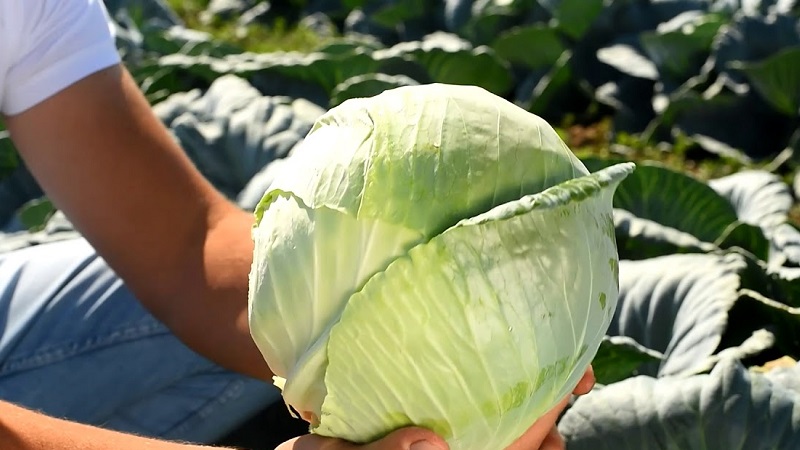
Early
Early maturing cabbage intended for fresh consumption. The harvested crop is not stored for long.
Reference. These varieties are suitable for continuous fresh harvest throughout the season. In this case, the seeds of the first batch are planted in mid-March, and then - with a break of 1–1.5 months.
Point
Ripening at 90-110 days... The forks are even green, with a waxy coating, weighing 0.7–1.7 kg, and up to 15–18 cm in diameter. The head of cabbage is yellowish-white in section, there are no hard veins. Productivity - 3–7 kg / m². Storage - up to 2 months.
Main advantages:
- does not crack even in wet weather;
- resistant to black leg disease.
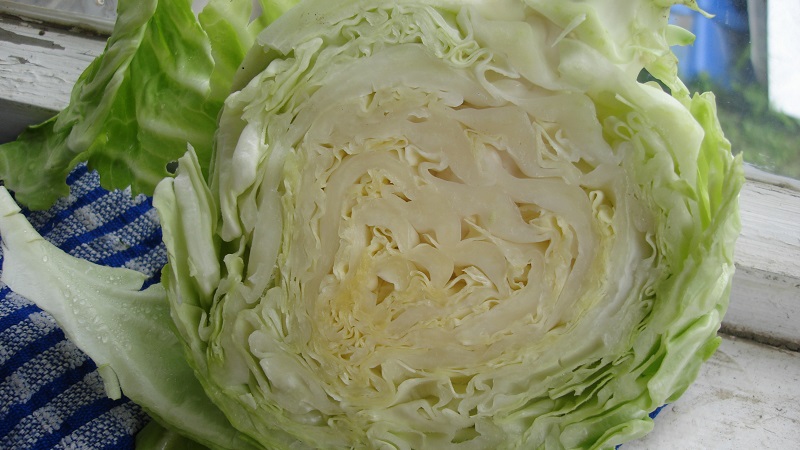
disadvantages:
- demanding on lighting, stops growing in a shaded area;
- not frost resistant;
- medium or low density of heads;
- unsuitable for transportation;
- external stump up to 12 cm long requires hilling.
Express F1
An early ripe hybrid of technical ripeness reaches in 60 days, biological - after 80–95 days. The head of cabbage is small, round in shape, medium density, white on the cut. The rosette of leaves is raised, the stump is short. The leaves are thin, with a delicate structure. Forks weight - 0.9-1.7 kg, yield - 3.3-4 kg / m2... Shelf life - up to 1 month.
Advantages:
- resistant to cracking;
- unpretentious in cultivation.
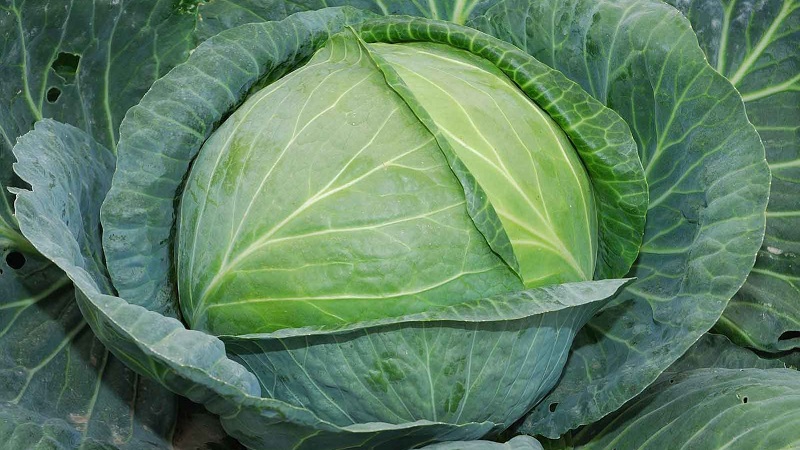
disadvantages:
- requires the treatment of adult plants from diseases and pests;
- the harvest is little stored.
Note! Grow cabbage Express only seedling method.
Spitz
This type of white cabbage is distinguished by a cone-shaped pointed head, soft structure and delicate taste of leaves. Contains a large amount of vitamins and minerals. Ripening period - 90-100 days, vegetable weight - up to 2 kg, crop storage period - up to 3 months.
Advantages:
- suitable for fermentation;
- contains up to 9-12% of iodine from the daily value.
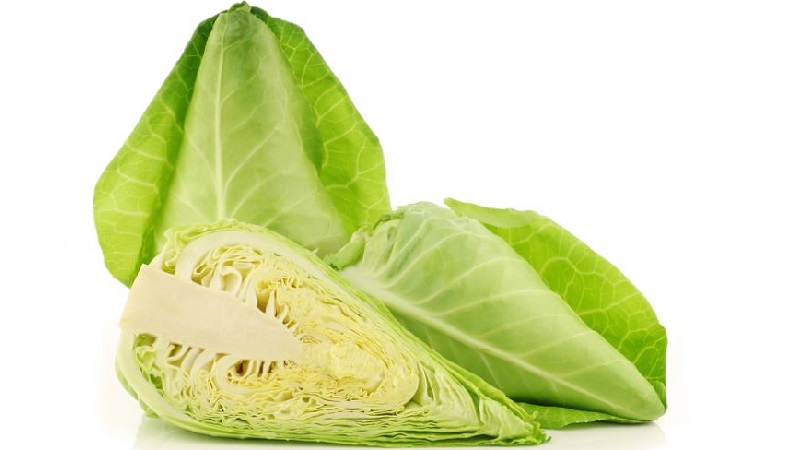
disadvantages:
- high cost of seeds;
- increased requirements for the care and prevention of diseases;
- low transportability.
Spitz cabbage varieties with medium ripening times have been developed.
Akira F1
Ultra-early hybrid, ripening period to technical and biological ripeness - 48-52 days... Heads of cabbage are dense, compact, spherical, brightly colored, weighing 1.7–2.3 kg each. Productivity - 6-8 kg / m².
Advantages:
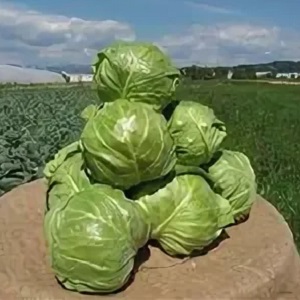 resistance to cracking;
resistance to cracking;- immunity to blackleg and gray rot;
- small stump - up to 5 cm;
- tolerates planting density well.
disadvantages:
- unstable to temperature changes;
- does not tolerate drought.
Mid-season
General features of mid-season varieties - long shelf life (up to 6 months) and sweetish taste of vegetables.
Sibiryachka 60
Bred in 1964 specifically for cultivation in Siberia and northern regions of Russia... Ripening period - 115-130 days. Heads of cabbage are dense, round, up to 25 cm in diameter, white when cut. The upper leaves are wrinkled, dark green, with a pronounced waxy bloom. Outside stump - up to 12 cm. Vegetable weight - 2-4.3 kg. Productivity - up to 10 kg / m² Storage - up to 4 months.
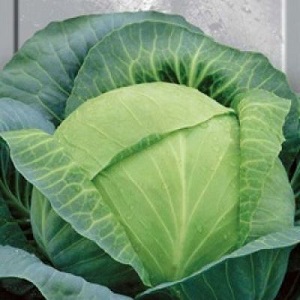 Advantages:
Advantages:
- frost-resistant (seedlings - up to -7 ° C), tolerates temperature changes well;
- undemanding to sunlight and food;
- heads of cabbage are suitable for fresh consumption and fermentation.
The variety is picky about watering: when it dries, it loses its taste, when waterlogged, it is easily exposed to diseases, with uneven watering, it is prone to cracking.
Not suitable for cultivation in the southern regions Russia.
Russian size
Medium early variety with a growing season of 115-130 days... The rosette is large, up to 80 cm in diameter. Heads of cabbage are round, dense, light green, with a waxy bloom, white on the cut. The taste is sweet, there are notes of bitterness in the leaves adjacent to the stump. Average weight of cabbages is 4 kg, when grown in the southern regions of Russia - up to 12-15 kg. Productivity - from 20 kg / m².
Advantages:
- large size of heads of cabbage, high yield;
- versatility of use: vegetables are good fresh, suitable for fermentation.
According to the description and reviews, Russian size is picky about lighting and watering.

Late ripening
Late ripening varieties are suitable for long-term storage and fermentation in autumn and winter... Consider what late-ripening varieties are.
Languadeaker
Ripening period is 145-170 days... Heads of cabbage are dense, oval, dark green. The weight of the forks is 2.2–4.5 kg, the yield is up to 10 kg / m². Shelf life without loss of taste at a temperature of + 2 ... + 6 ° C - up to 10 months.
Advantages:
- sweet taste;
- resistance to cracking and bacteria.
Variety keel prone.
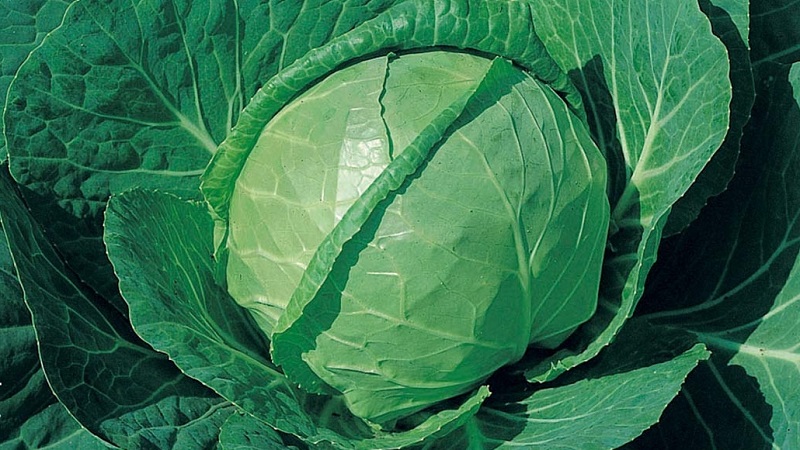
Extra F1
Biological ripeness occurs 154-170 days after emergence... The rosette of the plant is raised, up to 60 cm in diameter. The head of cabbage is dense, dark green, with a waxy bloom and a slight purple tint, yellow-white in section. Outside stump - up to 15 cm. Vegetable weight - 2.5–3.2 kg, yield - 5–7 kg / m². The shelf life is 6-9 months.
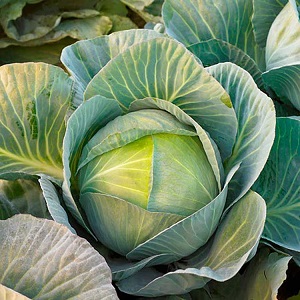 Advantages:
Advantages:
- resistance to gray rot and fusarium;
- the possibility of mechanized harvesting;
- evenness of heads of cabbage.
Disadvantages of Cabbage Extra:
- the need for hilling;
- stiffness of the leaves.
Zeno F1
The ripening period of the hybrid is 150-180 days... The head of cabbage is round, light green, white at the cut. Leaves of medium hardness, thin. Fork weight - 2-3 kg, yield - up to 15 kg / m². The shelf life of Zenon cabbage is 8-9 months.
Advantages:
- good taste without bitterness;
- resistance to point necrosis, fusarium and thrips;
- suitability for mechanized harvesting and cleaning;
- the spreading rosette suppresses the development of weeds.
No disadvantages.

Snow Maiden F1
Ripening period - 150-170 days... Heads of cabbage are roundish light green, with a waxy bloom, snow-white on the cut. The average weight is 3.2–5.2 kg, but with the observance of agricultural technology, vegetables grow up to 10 kg. Productivity - 6-12 kg / m².
 Advantages:
Advantages:
- lack of bitterness in taste;
- undemanding care;
- resistance to disease.
No disadvantages... The hybrid was obtained for cultivation in Siberia and the Urals.
Shelf life - 12 monthsbefore harvesting.
Creumont F1
Hybrid with a ripening period of 160-175 days... The rosette of the plant reaches 75–85 cm in diameter. Heads of cabbage are round or round-flat, even, green, with a strong waxy bloom. On a cut, the pulp is white. The outer stump is up to 24 cm, the inner one is thin, up to 7 cm. The weight of the forks is 2.1–2.5 kg, in the southern regions they grow up to 4.5–5 kg. Productivity - 5-8 kg / m². Has a bitter taste, which disappears as vegetables are stored (after 3-4 months). The shelf life is up to 8-10 months.
Advantages:
- uniform ripening;
- resistance to necrosis and rot;
- suitability for winter fermentation;
- resistance to cracking.
Creumont you need to constantly huddle.
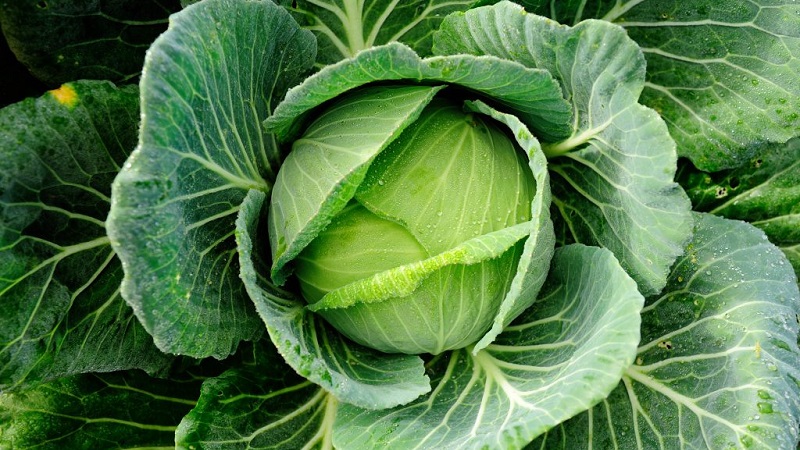
The sugar content in the cabbage increases with storage and the concentration of lactic acid rises. Sauerkraut cooked in winter has a mild taste and contains more vitamins.
Types of cabbage
Cabbage is a species of the Cabbage genus, which divided into several varieties, represented by varieties of different ripening periods... They have simple leaves and a similar root system. Everyone needs agricultural technology that has minor differences.
White-headed
White cabbage is the most common type of cabbage. All of its varieties have one feature - a head of cabbage, formed from the leaves of a plant..
Contains a complex of vitamins A, K, PP, B6, B9 and minerals such as sodium, fluorine, potassium and calcium. Strengthens the immune system and eliminates the manifestations of vitamin deficiency.
Reference. Cabbage contains vitamin U, which strengthens the mucous membrane of the stomach and duodenum, reduces allergies.
The vegetable is used in the preparation of hot dishes, salads, for pickling and pickling, fresh consumption and long-term storage. Cabbage juice is used in folk medicine and cosmetology.
Colored
Cauliflower — an annual plant that reaches biological maturity after 130-210 days... The fruit is a dense head, collected from inflorescences at the initial stage. The root system is in the topsoil and often protrudes to the surface. The vegetable is white, yellowish or green, depending on the variety.

Cabbage is approved for use in food for diseases of the gastrointestinal tract, in comparison with white cabbage contains less fiber (up to 2%). It is rich in vitamins (C, E, H, D, PP and K), minerals (iron, phosphorus, potassium, calcium and selenium) and organic acids (malic, citric and tartronic). It is used in the preparation of various dishes, suitable for pickling.
Common varieties and hybrids of cauliflower:
- Snowball;
- Shannon F1 - the head of the original form, bright green;
- Collage F1 - 4 types of different colors: white, yellow, salad and purple.
Chinese
This is the common name for Peking cabbage and bok choi. Both of these plants are turnip varieties belonging to the Cabbage genus.
Bok choy
Bok choy (collard greens) is a separate variety of Chinese... Has no head, edible leaves, forms around the central bud. It has a much smaller size compared to Chinese cabbage.
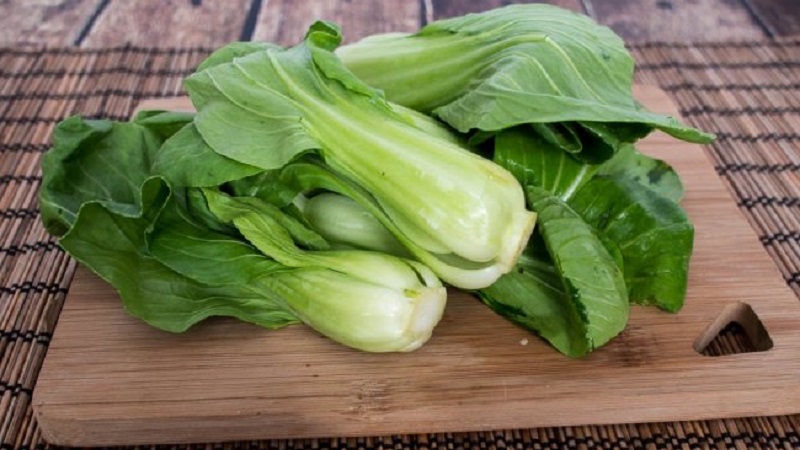
Rich in vitamins A, B, K and C, has a low calorie content - 14 kcal / 100 g.
Important! Bok choy contains glucosinolates - secondary metabolites of the plant, which, when used frequently in large quantities, accumulate in the body and contribute to the exacerbation of chronic diseases.
Used for preparing salads and fresh consumption.
Beijing
Chinese cabbage (petsai, lettuce, Chinese salad) is a biennial herb of the Cabbage family. Succulent leaves form a loose oblong head of cabbage weighing 0.1–0.4 kg and up to 60 cm high.
Rich in vitamins A and C, contains up to 2.5% fiber... It has a negative calorie content, that is, more calories are spent on its digestion than it contains (13-16 kcal / 100 g).
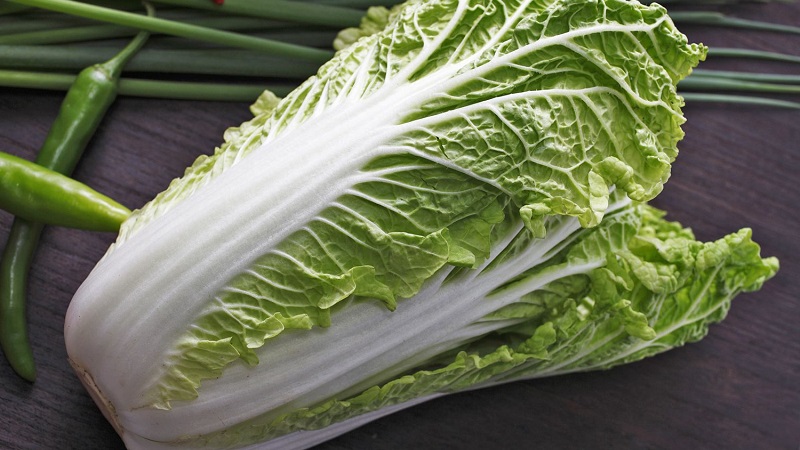
When grown in seedlings, the first crop is ready for use in early June. The culture is undemanding to agricultural technology. Such varieties and hybrids are grown in all regions of Russia.:
- Vorozheya;
- Nika F1;
- Manoko F1.
It is used for the preparation of salads, hot snacks and fresh consumption.
Brussels
Brussels sprouts - a biennial variety of Cabbage... In the first year of vegetation, it forms a thick stem with many heads (30-50 heads) up to 3 cm in diameter. They are a smaller copy of white cabbage.
The plant is resistant to temperature changes... Thanks to its powerful root system, it does not require frequent watering. Demanding on the quality of the soil, needs regular feeding.

Common varieties and hybrids resistant to diseases:
- Hercules;
- Isabel;
- Franklin F1.
The vegetable contains vitamins A, C, PP, minerals and fiber... Caloric content - 43 kcal / 100 g. It is used for cooking various dishes and marinating.
Savoy
Savoy cabbage, like white cabbage, forms forks. Strongly corrugated thin leaves form loose, soft heads.
The content of vitamins A, B6, and PP surpasses white, but has a similar agricultural technique.
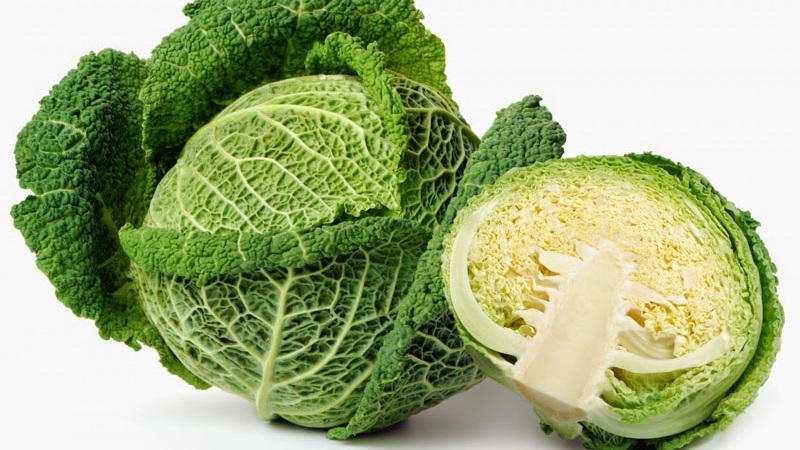
Popular varieties and hybrids:
- Anniversary;
- Alaska F1;
- Gold early.
Not suitable for salting, fermentation, pickling and long-term storage.
Redhead
Red cabbage differs from white cabbage only in color: Her leaves are bright purple, with white veins.
Useful properties due to the presence of anthocyanins in the composition - vegetable glycosides responsible for the color of the plant. They reduce the risk of the appearance and development of inflammation in the body, prevent damage to cells due to oxidation.
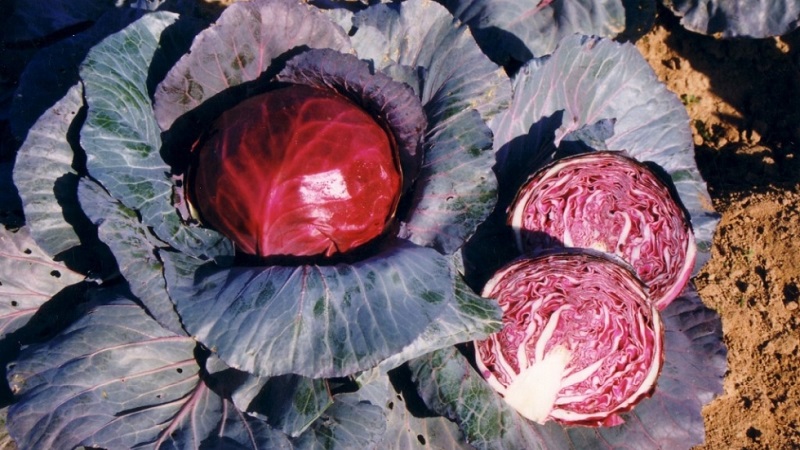
The best varieties:
- Ruby;
- Topaz;
- Languadeaker ed.
Such cabbage is suitable for fermentationpreparing various dishes and salads... Does not change taste when stored for 8-10 months.
Conclusion
Each type and variety of cabbage has its own advantages: long-term storage, excellent taste or increased content of vitamins that have a general strengthening effect on the body. For their cultivation, various sowing periods, watering and nutrition requirements are provided. Compliance with the selected species to climatic conditions and personal experience will allow you to grow a decent harvest.